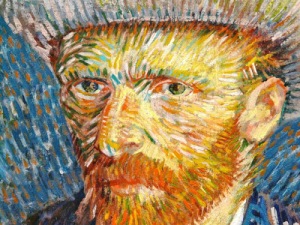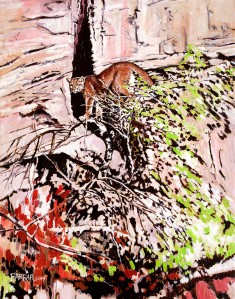Brush strokes. The absolute poetry of painting. Why not show the poetry in motion? That’s what I love so much about Impressionism. It’s a movement born of deft quickness. Painting so fast there’s no time to smooth out the strokes. Ah the beauty. Depending on the shape of the brush, the stroke can look rectangular, or maybe more of a line, or a blob. But it’s a stroke in time. It’s the recording of the action the artist took in that very moment, a recording of an artist’s brain. I love it.
If you’ve been following me you already know that I have a thing for the Impressionists. Those rebels refusing to take “no” from the French Academy and setting up their own way of doing things. The French Academy (started about 1648 and lasting into the early 1900s) was a group of well trained, excellent artists of their day, but they had their own traditions and ways of doing things and they didn’t want to accept the new ways. In came the Impressionists. The Impressionists, the new artists tired of getting kicked out of the Academy shows called Salons, didn’t even know yet that they would be branded one day as Impressionists. They were just tired of the French Academy telling them no, you’re not good enough to join our club. Get outta here. Every artist experiences the “no’s.” It’s so hard. But what’s an artist to do?
Using loose brush strokes is a hallmark of Impressionism (1870-1910). A loose brush stroke shows a painter in action, a fast painter. A loose brush stroke, not overly worked makes a softer edge and is able to show the play of light and color to a greater degree. A loose brush stroke can show the buildup of texture. Say you have a glob of paint on your brush and you lay it down on the canvas and leave it there untouched. Beauty. A glob of color waiting to catch the light. Light that brings color to life. A blob can catch a ray of light much more than an absolutely flat surface of smoothed out paint.

Vincent Van Gogh (1853-1890) self portrait. A perfect example of brush strokes at their finest. All color and vibrancy with no smoothing yet the image comes through loud and clear. I like loud, clear, color. Van Gogh’s got it all.
I’ve chosen a Van Gogh painting to show you the utter delight of the brush stroke. He’s technically called a Post-Impressionist but still hangs into the very end of the Impressionistic art history movement. Look at the way he shows the subject, brutally. No smoothing out. Every touch of the brush is evident. Ah painting.

Impression Cougar by Dede Farrar created April 2014. The foliage is painted with brush strokes in complimentary colors. No leaves are actually depicted, only the impression of leaves using the stroke of a brush, fully loaded with color with no smoothing of the edges. The passion and poetic language of painting.
I do not dare to compare myself to Van Gogh other than I love the brush stroke. I do not aim to smooth out every detail. The essence of color and movement of the brush is key in my art work. The Impressionist artists are one of the influences that matter in my creative endeavors. I believe that if you don’t have at least a decent grasp of history and where you’re coming from your work will probably lack in some profound way. Take a look back folks, and let it help guide you into the future.
